#jules barbier
Text

Random youtuber's reaction to the Violin Aria
#Les contes d'Hoffmann#the tales of hoffmann#still not my favorite production#poor Niklausse deserves so much better#but anyway#i thought this comment was funny#opera#opera tag#Jaques Offenbach#Jules Barbier#Michael Carré
19 notes
·
View notes
Text
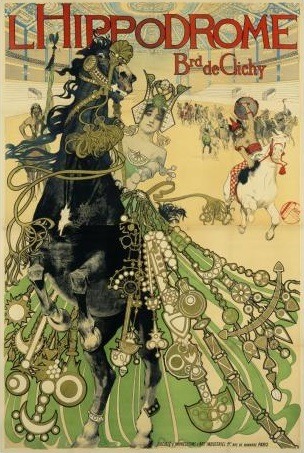




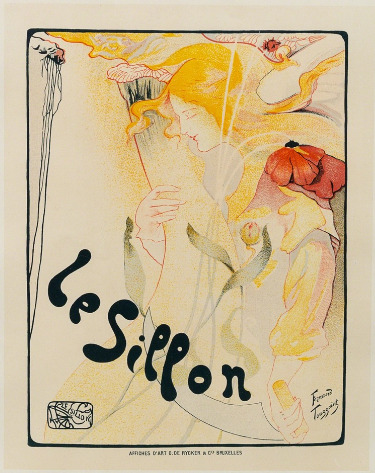
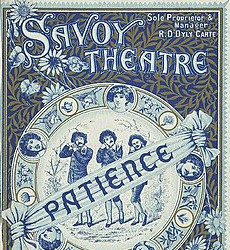


STFD Vintage Poster/Ad Art
1- L'HIPPODROME by Manuel Orazi, 1905 (Lillian's office)
2- In Agra (cover art for 'Asia' Magazine) by Frank McIntosh, 1930 (Lillian's office)
3- Lidia by Jules Cheret, 1895 (Lillian's office)
4- Job Paper Cigarettes by Jules Chéret, 1896 (Lillian's office)*
5- Flamenco Dancer by Henry J. Soulen, c.1930 (Lillian's office)**
6- Le Sillon by Fernand Toussaint, 1895 (Lillian's office)
7- Original Program for Gilbert and Sullivan's Patience by Clement-Smith & Co., 1882 (Prop room)
8- The Empire Theatre Program by George Barbier, 1928 (Mattie's dressing room)
9- Le Mage by Alfredo Edel, 1891 (Prop room)
*HeR changed the text on the in-game artwork - can't have an ad for cigarettes in a game for youths after all. 'Fete des menteurs' roughly translates to 'Liars' Ball'

**this is one of those irritating cases where the only source I can track down is the Mary Evans/Pictures Now image collection. Soulen's signature is visible on the piece - here it is side-by-side with an illustration he did for the Saturday Evening Post in 1932.


149 notes
·
View notes
Text

Moodboards for the Faust operas, part 2: Faust, 1859 (by Charles Gounod; libretto by Jules Barbier and Michel Carré, after Goethe's Faust Part I)
Je suis libre, il est là, je l'entends, je le vois!
Oui, c'est toi! je t'aime!
Les fers, la mort même
Ne me font plus peur,
Tu m'as retrouvée,
Me voilà sauvée!
C'est toi, je suis sur ton cœur!
#faust#moodboards#opera#gounod faust#faust opera moodboards#hot faust summer#there is a lot of stuff in this opera i had a lot of rejected pics
14 notes
·
View notes
Text


Léon Melchissèdec (1843-1925) and Speranza Engalli as, respectively, S.te Croix and Meala in Victor Massé's "Paul et Virginie". This is one of the very many photos made in the Atelier Nadar on the occasion of the creation of this title, at the Théâtre Lyrique in November 1876.
Melchissèdec sang at the Paris Opéra from 1879 to 1891, and again from 1905 to 1912.
The Russian-born mezzo-soprano Speranza Engalli (b. 1848; d. ?) made her début in 1875 as Maddalena in Rigoletto, was to have a relatively short but brilliant career, later appearing at the Théâtre-Italien and the Opéra-Comique, as Carmen and as Eros in Psyché by Ambroise Thomas (1878), then at the Paris Opéra (Palais Garnier) as Amneris in Verdi’s Aida (1882). After her success as Marpha, she received high acclaim as the slave Méala in Victor Massé’s three-act opera Paul et Virginie (libretto by Michel Carré and Jules Barbier, based on the famous work of the same name by Bernardin de Saint-Pierre), when it was premièred at the Théâtre National Lyrique on 15 November 1876. Speranza Engalli appears among the musical personalities mentioned by Marcel Proust in À la recherche du temps perdu (Sodome et Gomorrhe).
#opera#classical music#music history#bel canto#composer#classical composer#aria#classical studies#Léon Melchissèdec#Melchissèdec#baritone#Paris Conservatoire#Opéra-Comique#Paris Opéra#classical musician#classical musicians#classical history#musician#musicians#chest voice#maestro#diva#prima donna#classical#historian of music#classical singing#classical singer#opera singer#Speranza Engalli#mezzo soprano
14 notes
·
View notes
Photo

1922 George Barbier, plate depicting two figures and a dog, engraved by François Louis Schmied and printed by Pierre Bouchet, in Albert Flament, Personnages de comédie (Paris: Jules Meynial, 1922). Reproduced from the original in The Metropolitan Museum of Art, Elisha Whittelsey Collection, Department of Drawings and Prints.
20 notes
·
View notes
Text
Photos from my Opera Garnier Trip 2 of 3
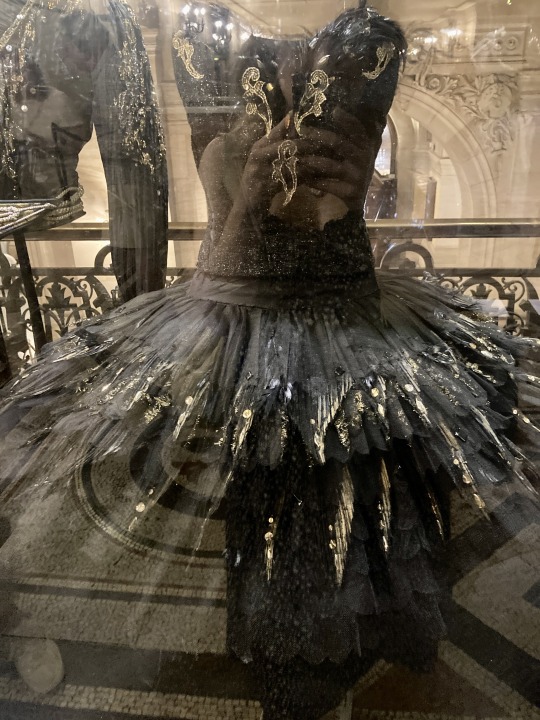
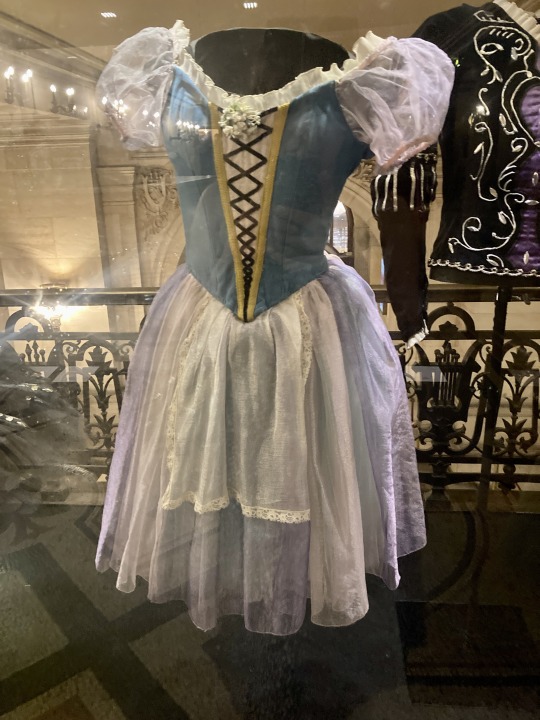

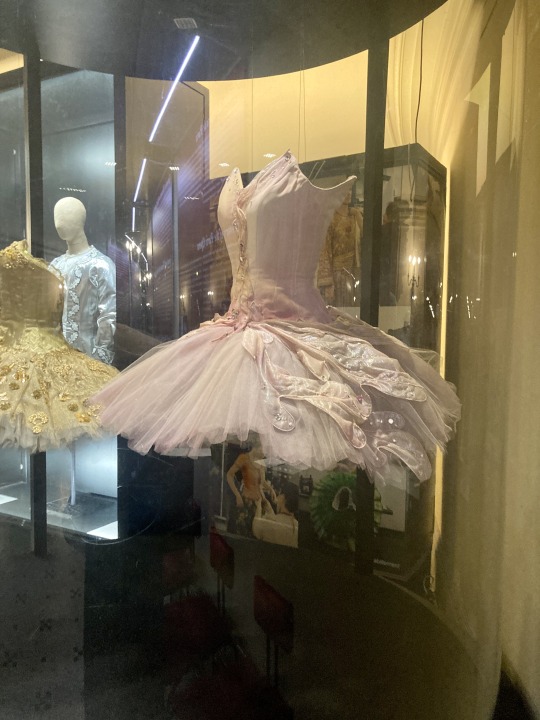
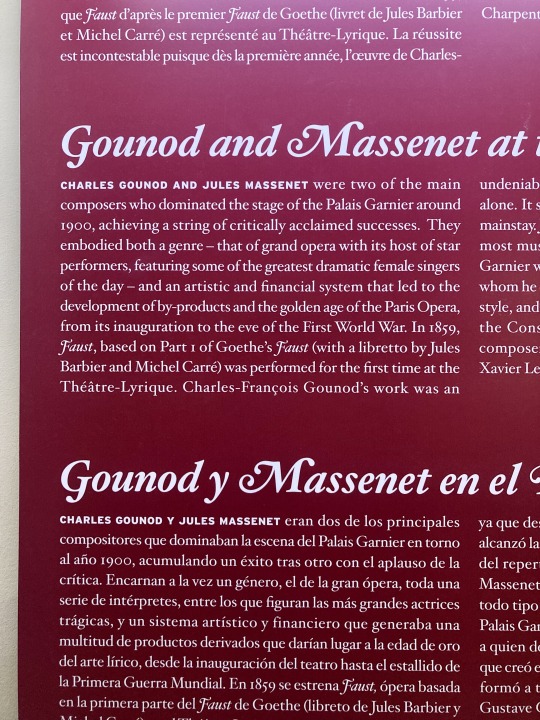
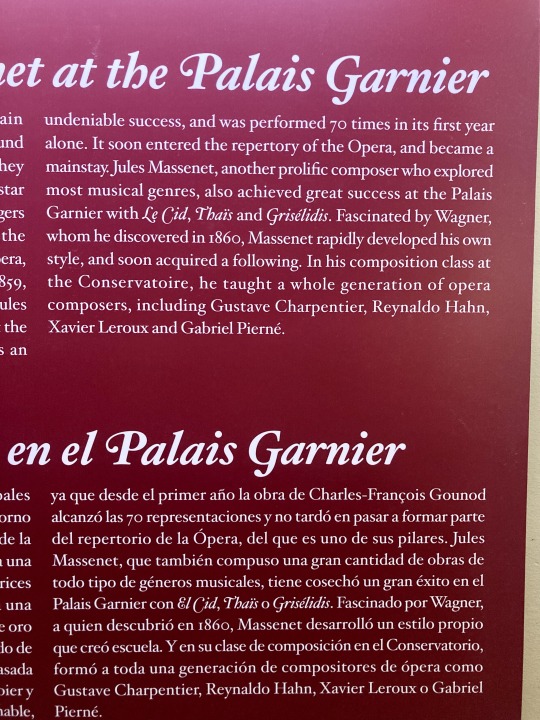
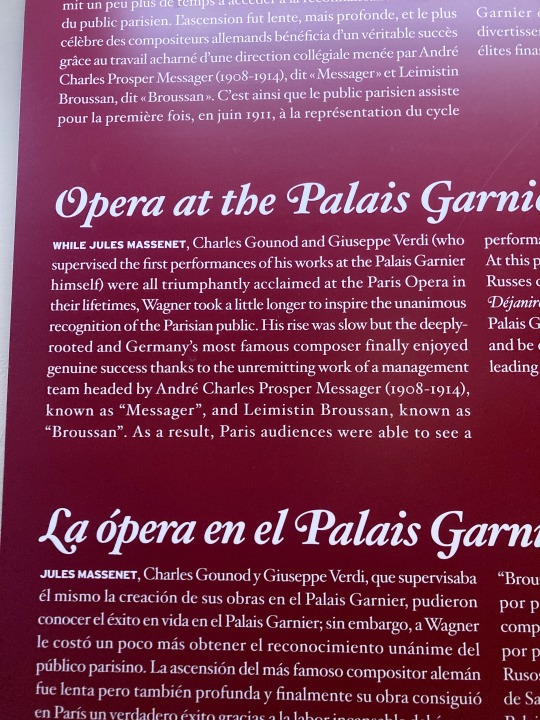

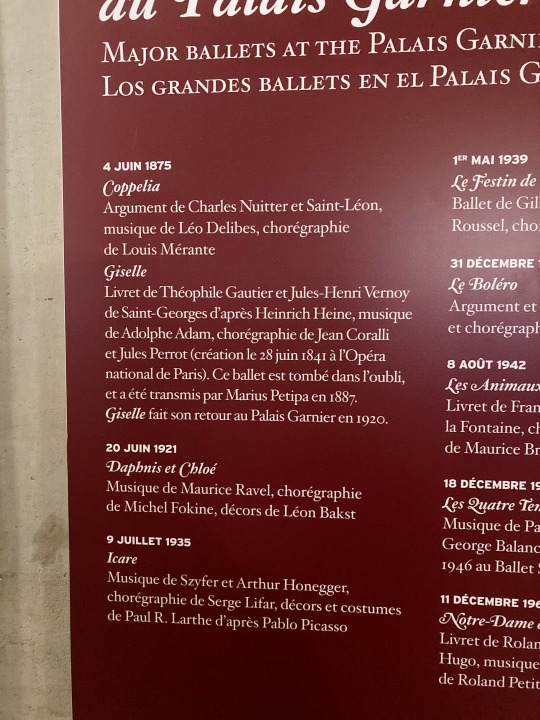


Took some photos of the exhibit up at the Opera Garnier for my own (cough cough) research purposes and thought it might be helpful for others! Thought the Don Quixote dress looked awfully familiar!
Transcript of the information under the cut:
Gounod and Massenet at the Palais Garnier
Charles Gounod and Jules Massenet were two of the main composers who dominated the stage of the Palais Garnier around 1900, achieving a string of critically acclaimed successes. They embodied both a genre - that of grand opera with its hoses of star performers, featuring some of the greatest dramatic female singers of the day - and an artistic and financial system that led to the development of by-products and the golden age of the Paris Opera from its inauguration to the eve of the First World War. In 1859, Faust, based on Part 1 of Goethe's Faust (with a libretto by Jules Barbier and Michel Carre) was performed for the first time at the Theater-Lyrique. Charles-Francois Gounod's work was an undeniable success and was performed 70 times in its first year alone. It soon entered the repertory of the Opera and became a mainstay. Jules Massenet, another prolific composer who explored most musical genres, also achieved great success at the Palais Garnier with Le Cid, Thais, and Griselidis. Fascinated by Wagner, whom he discovered in 1860, Massenet rapidly developed his own style, and soon acquired a following. In his composition class at the Conservatoire, he taught a whole generation of opera composers, including Gustave Charpentier, Reynaldo Hahn, Xavier Leroux, and Gabriel Pierne.
Opera at the Palais Garnier around 1900
While Jules Massenet, Charles Gounod, and Giuseppe Verdi (who supervised the first performances of his words at the Palais Garnier himself) were all triumphantly acclaimed at the Paris Opera in their lifetimes, Wagner took a little longer to inspire the unanimous recognition of the Parisian public. His rise was slow but the deeply-rooted and Germany's most famous composer finally enjoyed genuine success thanks to the unremitting work of a management team headed by Andre Charles Prosper Messager (1908-1914) known as "Messager", and Leimistin Broussan, known as "Broussan". As a result, Paris audiences were able to see a performance of the entire Ring cycle for the first time in June 1911. At this period, the Palais Garnier hosted Serge Diaghilev's Ballet Russes company, and Richard Strauss' Salome and Saint-Saens Dejanire both entered the repertory. During the Belle Epoque, the Palais Garnier was one of the chief places for Paris society to meet and be entertained, with an audience of subscribers made up of leading financiers, industrialists, and politicians.
Major Ballets at the Palais Garnier
4 June 1875
Coppelia - Argument de Charles Nuitter et Saint-Leon, Musique de Leo Delibes, choregraphie de Louis Merante
Giselle - Livret de Theophile Gautier et Jules-Henry Vernoy de Saint-Georges d'apres Heinrich Heine, musique de Adolphe Adam, choregraphie de Jean Coralli et Jules Perrot (creation le 28 Juin 1841 a l'opera national de Paris). Ce ballet est tombe dans l'oubli, et a ete transmis par Marius Petipa en 1887. Giselle fait son retour au Palais Garnier en 1920
20 Juin 1921
Daphnis et Chloe
musique de Maurice Ravel, choregraphie de Michel Fokine, decors de Leon Bakst
9 Jullet 1935
Icare
Musique de Szyfer et Arthur Honegger, choregraphie de Serge Lifar, decors et costumes de Paul R Larthe d'apres Pablo Picasso
17 notes
·
View notes
Text
L’enfant des fées (5)

Précédents épisodes
Peu après, la canonnade s’arrêta brutalement. Louis n’entendait que sa respiration. Il sentait le poids des poutres sur ses tibias brisés. Il garda en mémoire le visage de Teaghan, peu avant que la lumière ne s’éteignit ; les yeux exorbités, le crane défoncé par le plafond, et le sang coulant le long du front. Autour de lui, il ne régnait que la poussière, l’obscurité absolue et la mort. Mais, il y avait toujours des coups de pioche contre la terre. Ils brisaient le silence angoissant des ténèbres.
Dans un vain effort, il essaya de remuer les doigts. La douleur fut si terrible, qu’il n’insista pas. Dès lors, il savait qu’il était condamné… condamné à mourir enterré comme un chien perdu au fond d’un puits. Il cria, hurla espérant être entendu. Seuls les morts l’écoutaient. Et les coups continuaient dans le sol.
Petit-à-petit, l’angoisse laissa place à la résignation. Il savait qu’il n’y en avait plus pour longtemps. Et ne pas voir l’état dégradé du plafond au-dessus de sa tête, le rassurait un peu. Dès lors, il attendit que tout s’effondre, que son corps éclate, tel un fruit mûr, sous le poids de la terre et du bois de la charpente. Il attendit patiemment, sagement. Et il attendit avec ses souvenirs. Les pelles continuaient de battre la terre.
Ils étaient partis passer quelques jours dans le vignoble nantais, le temps d’un weekend, dans le domaine familial d’Armande. Ils arrivèrent tôt grâce au chemin de fer, une calèche les attendit à la gare. Habillée d’une élégante robe bleue claire et d’un large chapeau blanc, Armande ouvrait toujours son ombrelle, bien qu’elle ne le trouvât point pratique. Pour la première fois, Louis s’était rasé la moustache. D’habitude, il partait chez le barbier du quartier, mais ce matin, il se rasa lui-même cette moustache qu’il trouvait ridicule. Pourtant, de nombreux hommes portaient la même. A côté du couple, les enfants en tenue du dimanche, restaient debout, attendant sagement de monter dans le carrosse, comme l’appelait Henriette. Jules se démarquait avec son chapeau encerclé d’un long nœud bleu. Il cria, bondit de joie en reconnaissant Martin, un domestique de son grand-père.
Louis, se remémora la traversé des vignes. Elles appartenaient toutes à son beau-père. Des paysans de tous sexes cueillaient les grappes pour les jeter dans un énorme panier accroché au dos d’un gaillard au torse nu. Il suait alors qu’il ne faisait pas vraiment chaud. Chaque coupe de couteau semblait faire le bruit d’une pelle contre la terre.
Les enfants adoraient venir dans cette ferme à l’aspect de château. Ils s’amusaient à courir dans tous les sens, jouant à chat ou à cache-cache. Parfois, des cousins les accompagnaient. D’autre fois, ils suivaient leur grand-mère, fière de ses petits-enfants et impatiente de leur enseigner quelques recettes maison. Louis était toujours reçu comme l’étranger, celui qui avait volé leur fille. On ne lui parlait pas, pas même pour dire bonjour. On le regardait de travers, on avait envie de cracher sur son passage pour conjurer le sort. Mais il se doutait que son métier de policier était la cause de ce mépris.
Toutefois, il était mal vu de ne pas rendre visite à sa belle-famille, une des plus riches de Nantes à Clisson. Leur vin se vendait dans toutes les grands restaurants d’Europe ; de Paris à Vienne, de Londres à Moscou, on enrichissait les parents d’Armande en buvant leur vin blanc.
Après le repas, la famille accompagna les aïeuls dans une longue promenade à contempler les terres et écouter le grand-père dépeindre avec fierté sa fortune. Il n’y avait rien de plus saoulant pour Louis que d’entendre le vieil homme blatérer les mêmes choses en gonflant la poitrine. Le battement de son cœur faisait le même son qu’une pioche creusant un puits.
Les enfants couraient entre les vignes. Ils ne se souciaient pas des nuages gris en train d’envahir lentement le ciel. Si bien qu’ils s’éloignèrent alors que leurs parents commencèrent à faire demi-tour. Leur mère les appela, mais ce fut la pluie qui les rameuta vers la ferme. De grosses gouttes cognèrent le chemin lorsqu’ils arrivèrent enfin sur le perron de la porte. Ils entrèrent accueillis par Martin qui leur apporta une serviette.
- Vous en avez apporté une de trop, mon cher. Déclara la mère d’Armande.
Il n’eut pas le temps répondre. Un cri fit sursauter tout le monde. Armande réalisa que sa dernière fille manquait à l’appel. Dès lors, la famille fut saisie d’angoisse à l’idée de l’avoir laissée au milieu du vignoble sous l’averse. Aussitôt Louis sortit, rassurant en même temps son épouse. Il devinait où elle pouvait se cacher. Il courut sur la route déjà détrempée. La pluie chaude collait sa chemise sur sa peau. Il courut jusqu’à une grange. Il espéra que Blandine s’était réfugiée dedans et, en effet, elle attendait sagement que le beau temps revienne. Elle restait assise sur la paille, souriant à son père, amusée de le voir essoufflé. Les gouttes tombant sur le toit, imitèrent le bruit des coups de pioche dans une mine.
- La gymnastique n’est plus de mon âge, dit-il.
Il s’assit à côté de sa fille. Il soufflait toujours comme un bœuf, cherchant à retrouver un rythme normal. Son cœur battait si fort qu’il crut l’entendre exploser. Il proposa d’attendre la fin de l’averse. Blandine rit, heureuse de rester dans cette grange qu’elle adorait. Durant ces séjours, elle partait toujours dans cet endroit. Pour une fillette, c’était une caverne d’Ali Baba. Elle voulait grandir pour enfin monter l’échelle et découvrir l’étage. Par ce côté aventureux, elle ressemblait énormément à son père.
Les bruits dans la terre résonnèrent de plus en plus fort. Louis préféra se perdre dans ce souvenir lointain. C’était il y a deux ans. Blandine avait à peine trois ans. Cependant, elle paraissait en avoir plus. Il se rappela cette attente avec sa fillette. Elle riait, lui parlait de ses frères et sœurs. Elle posait pleins de questions. C’était surement ce jour qu’elle devint sa préférée. Parce qu’il n’avait jamais discuté avec les deux autres. L’enfant est enfant, l’adulte reste l’adulte. C’est au rôle de la nourrice et de la mère de s’occuper des enfants. De plus, le père doit montrer de la fermeté, jamais de sympathie. Mais ce jour, il accompagna sa fille dans ses rires.
Il aurait voulu revivre ce moment. Poser sa tête sur les genoux de sa fille et lui parler plus profondément. Dire qu’il était fier d’elle et de ses frères. Dire qu’il aimerait la voir grandir, la protéger, et la voir vieillir. Il détesterait son mari, mais il serait fier d’entrer dans l’église pour son mariage. Il serait heureux de regarder ses petits-enfants jouer autours de lui et d’Armande. Ils auraient son rire ou son sourire. Le plus grand aurait son regard.
Pendant que Louis rêvait, une voix s’éleva de nulle part. Il ouvrit les yeux mais ne constata que le noir et la mort autours de lui. Il inspira fortement, gardant en image sa fille caressant sa tête sur ses genoux. Il ne savait plus s’il avait imaginé où s’il avait réellement vécu cette scène. Il crût sentir une petite main frôler ses cheveux, une main d’enfant. Ses jambes ne bougeaient toujours pas. Par contre, il sentit le sol vibrer. La voix retentit de nouveau.
- Je suis là ! cria-t-il, à l’aide !
Il voulait revivre ce moment, retrouver Blandine dans la grange. Il voulait revoir son fil. Il voulait entendre le son de sa voix. Jules devait être grand et fort maintenant. Il voulait embrasser Henriette, celle qu’il a toujours délaissée. Parce qu’elle était l’ainée, parce qu’elle était une fille alors qu’il voulait un garçon. Il voulait sentir le parfum d’Armande, danser avec elle. Et lui dire qu’il l’aime plutôt que de l’écrire. Il voulait retourner chez lui, mais pour cela, il devait vivre.
Alors, il se mit de nouveau à crier, espérant être entendu. Il souhaitait que les coups de pioche soient vrais. Et s’il s’agissait des allemands, il pria leurs âmes d’avoir de la compassion pour un père de famille. Il cria, hurla. Les coups s’approchèrent de plus en plus. Puis plus rien !
Le sergent demeura dans le silence. Sa respiration devint de plus en plus difficile. Il ne savait pas si le plafond menaçait de tomber. Il se rappela de sa fille. Il se souvint de la grange, la pluie qui tombait lorsque soudain :
- Il y a quelqu’un ?
La voix était française. Louis était sauvé.
Alex@r60 – juillet 2023
7 notes
·
View notes
Text
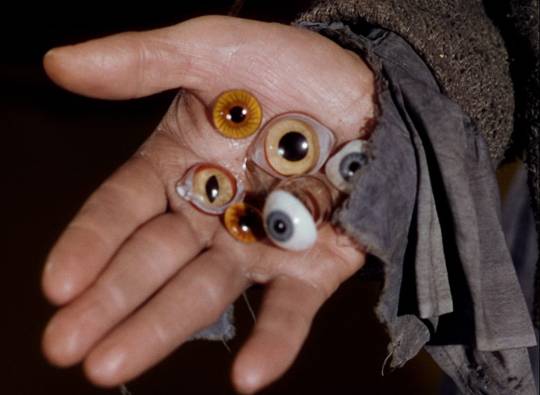
The Tales of Hoffmann (Michael Powell and Emeric Pressburger, 1951)
Cast: Robert Rounseville, Moira Shearer, Ludmila Tchérina, Ann Ayers, Pamela Brown, Léonide Massine, Robert Helpmann, Frederick Ashton, Mogens Wieth, Lionel Harris, Philip Leaver, Meinhart Maur, Edmond Audran. Screenplay: Michael Powell, Emeric Pressburger, Dennis Arundell, based on a libretto by Jules Barbier for an opera by Jacques Offenbach based on stories by E.T.A. Hoffmann. Cinematography: Christopher Challis. Production design: Hein Heckroth. Costume design: Ivy Baker, Hein Heckroth. Film editing: Reginald Mill.
Opera and film are two well-nigh incompatible media, with different ways of creating characters, evoking mood, and telling stories. The handful of good opera films are those that find ways of replicating the operatic experience within a cinematic framework, the way Ingmar Bergman does in his film of Mozart's The Magic Flute (1975), which takes liberties with the original libretto and casts the action in a theatrical setting. For their film of the Offenbach opera The Tales of Hoffmann, Michael Powell and Emeric Pressburger also tinker with the libretto, and with perhaps somewhat more justification: Offenbach didn't live to see his opera performed, and it exists in several variants. Opera companies rearrange and cut its various parts, and even interpolate music from other works by Offenbach. Like The Magic Flute, Hoffmann has fantasy elements that lend themselves to the special-effects treatment available to the movies, and Powell and Pressburger took full advantage. It is usually thought of as a companion piece to their film The Red Shoes (1948), in large part because it used many of the stars of that earlier film, including Moira Shearer, Robert Helpmann, Léonide Massine, and Ludmilla Tchérina, as well as production designer Hein Heckroth. The film version is as much ballet as opera, choreographed by Frederick Ashton, with many of the characters played by dancers whose voices are supplied by singers. The only singers who actually appear on screen are Robert Rounseville as Hoffmann and Ann Ayars as Antonia. Unfortunately, some of the singers whose voices are used aren't quite up to the task: Dorothy Bond sings both Olympia and Giulietta, and the difficult coloratura of the former role exposes a somewhat acidulous part of her voice. Bruce Dargavel takes on all four of the bass-baritone villains played on-screen by Helpmann, but his big aria, known as "Scintille, diamant" in the French version, lies uncomfortably beyond both ends of his range. Rounseville, an American tenor, comes off best: He has excellent diction, perhaps because he spent much of his career in musical theater rather than opera -- though he originated the part of Tom Rakewell in Stravinsky's The Rake's Progress in 1951. He is also well-known for his performance in the title role of Leonard Bernstein's Candide in the original Broadway production in 1956. The film is overlong and maybe over-designed, and it sort of goes downhill after the Olympia section, in which Heckroth's imagination runs wild.
1 note
·
View note
Text
The employees of an independent music store learn about each other as they try anything to stop the store being absorbed by a large chain.
Credits: TheMovieDb.
Film Cast:
Joe Reaves: Anthony LaPaglia
Rex Manning: Maxwell Caulfield
Jane: Debi Mazar
Lucas: Rory Cochrane
A.J.: Johnny Whitworth
Debra: Robin Tunney
Gina: Renée Zellweger
Marc: Ethan Embry
Berko: Coyote Shivers
Warren: Brendan Sexton III
Corey Mason: Liv Tyler
Eddie: James ‘Kimo’ Wills
Mitchell Beck: Ben Bode
Croupier: Gary Bolen
Woman at Craps Table: Kimber Sissons
High Roller: Tony Zaar
Reporter: Patt Noday
Kathy: Julia Deane
Autograph Girl: Kessia Embry
Cop #1: Michele Seidman
Cop #2: Diana Taylor
Cop #3: Bernard Granger
Cop #4: Michael Harding
Lead Singer: Dave Brockie
Flower Delivery Guy: Kawan Rojanatavorn
Roulette Table Man: Corey Joshua Taylor
Ballet Dancer: Melissa Caulfield
Veronica: Lara Travis
Film Crew:
Director: Allan Moyle
Screenplay: Carol Heikkinen
Editor: Michael Chandler
Production Design: Peter Jamison
Art Direction: John Huke
Set Decoration: Linda Spheeris
Costume Design: Susan Lyall
Producer: Tony Ludwig
Producer: Arnon Milchan
Producer: Michael G. Nathanson
Producer: Alan Riche
Co-Producer: Paul Kurta
First Assistant Director: Joel Segal
Second Assistant Director: Philip A. Patterson
Camera Operator: Mitchell Amundsen
Steadicam Operator: Rick Raphael
First Assistant Camera: John Verardi
Second Assistant Camera: Ken Hudson
“B” Camera Operator: Jeff Moore
Still Photographer: Jim Bridges
Second Unit Director of Photography: Carolyn Chen
Director of Photography: Walt Lloyd
Casting: Gail Levin
Music Supervisor: Mitchell Leib
Negative Cutter: Mo Henry
Color Timer: Bob Putynkowski
Music Consultant: Karen Glauber
Music Editor: Sally Boldt
Supervising Sound Editor: Randle Akerson
Sound Effects Editor: Joe Earle
Sound Effects Editor: Linda Keim
Sound Effects Editor: David M. Horton
Dialogue Editor: Adam Sawelson
Dialogue Editor: Benjamin Beardwood
Assistant Sound Editor: Jonathan Phillips
Assistant Sound Editor: Bill Ward
ADR Supervisor: Linda Folk
ADR Editor: Sukey Fontelieu
ADR Mixer: Dean Drabin
ADR Mixer: Paul J. Zydel
ADR Mixer: Christina Tucker
ADR Voice Casting: Barbara Harris
Foley Supervisor: David Horton Jr.
Foley Mixer: Brian Ruberg
Foley Artist: Sarah Monat
Foley Artist: Robin Harlan
Sound Re-Recording Mixer: Gary Alexander
Sound Re-Recording Mixer: Don Digirolamo
Sound Re-Recording Mixer: Scott Ganary
Dolby Consultant: Douglas Greenfield
Dialogue Coach: Naomi Joy Todd
Craft Service: Theresa Honeycutt
Transportation Coordinator: William “Bill” Pitts
Transportation Captain: Jeff Long
Construction Coordinator: Jeffrey Schlatter
Construction Foreman: Ralph Woollaston
Location Manager: Mary Weisgerber Meyer
Location Manager: Molly Allen
Casting Associate: Tricia Tomey
Stunt Coordinator: Jery Hewitt
Key Makeup Artist: Jeff Goodwin
First Assistant Makeup Artist: Rick Pour
Key Hair Stylist: Aaron F. Quarles
First Assistant Hairstylist: Lizz Scalice
Costume Supervisor: Carolyn Greco
Costumer: Sevilla Granger
Special Effects Coordinator: Greg Hull
Sound Mixer: Douglas Axtell
Boom Operator: Robert Maxfield
Key Grip: Randy Tambling
Best Boy Grip: Dennis Zoppe
Dolly Grip: Rufus Granger Jr.
Dolly Grip: Clarence Brown
Gaffer: George Ball
Rigging Gaffer: Scott Graves
Production Coordinator: Cynthia Streit
Assistant Production Coordinator: Amy Chance
Script Supervisor: Annie Welles
Second Second Assistant Director: Stefania Girolami Goodwin
Unit Publicist: Alex L. Worman
Production Accountant: Karen Eisenstadt
Assistant Accountant: Rick Baer
Property Master: Robert Beck
Assistant Property Master: Beth Giles
Assistant Art Director: John Frick
Set Designer: Evelyne Barbier
Set Designer: Tim Eckel
Set Designer: Alan Hook
Set Dresser: Colleen Broderick
Art Department Coordinator: Susan Agnoff
First Assistant “B” Camera: Joe D’Alessandro
First Assistant Editor: Thomas J. Nordberg
Assistant Editor: Pamela Jule Yuen
Movie Reviews:
Filipe Manuel Neto: **An animated film, full of rebellion and energy.**
Remember the stores that sold...
0 notes
Text
youtube
Concurso Joaquina Lapinha - TMSP 18/dezembro/2023
Os vencedores do 2º Concurso de Canto Lírico Joaquina Lapinha, dedicado a solistas pretos, pardos e indígenas, se apresentam neste concerto com a Orquestra Experimental de Repertório, sob regência de Priscila Bomfim: link.
Programa
Final do 2º Concurso de Canto Lírico Joaquina Lapinha 2023
Joaquina Lapinha - Programa Harmonia 2017
Andrey Mira, baixo
Carlos Eduardo Santos, tenor
Jayana Paiva, soprano
Lorena Pires, soprano
Lucas Melo, tenor
Samuel Martins, tenor
Programa
GIUSEPPE VERDI
Abertura da ópera Luisa Miller (6’)
GIUSEPPE VERDI
Come dal ciel precipita, da ópera Macbeth (4’)
Andrey Mira, baixo
ANTÔNIO CARLOS GOMES
Alba dorata… O Ciel di Parahyba, da ópera Lo Schiavo (5’30)Lorena Pires, soprano
WOLFGANG AMADEUS MOZART
Il mio tesoro, da ópera Don Giovanni (4’)Carlos Eduardo Santos, tenor
WOLFGANG AMADEUS MOZART
Dalla sua pace, da ópera Don Giovanni (4’30)
Samuel Martins, tenor
GIOACHINO ROSSINI
La calunnia, da ópera Il Barbiere di Siviglia (5)’
Andrey Mira, baixo
GAETANO DONIZETTI
Una furtiva lagrima, da ópera L’Elisir d’Amore (5’)
Carlos Eduardo Santos, tenor
FRANCESCO CILEA
Io sono l’umile ancella, da ópera Adriana Lecouvreur (3’30)
Jayana Paiva, soprano
GEORGES BIZET
Abertura da ópera Carmen (3)
CHARLES GOUNOD
Salut, Demeure Chaste Et Pure, da ópera Faust (5’)
Lucas Melo, tenor
JULES MASSENET
Pourquoi me Réveiller, da ópera Werther (2’30)
Lucas Melo, tenor
GIACOMO PUCCINI
Un bel di vedremo, da ópera Madama Butterfly (4’30)
Jayana Paiva, soprano
PIOTR ILYICH TCHAIKOVSKYKuda, Kuda vï udalilis, da ópera Eugene Onegin (7’)
Samuel Martins, tenor
PIOTR ILYICH TCHAIKOVSKYÁria da Carta, da ópera Eugene Onegin (12’30)
Lorena Pires, soprano
0 notes
Video
youtube
LA MIA TOP TEN DEI CLASSICI DELLA LETTERATURA FRANCESE
Questa lista è stata molto più dura di quella dedicata ai classici della letteratura americana. decidere chi escludere è stato quasi come tagliarsi via un braccio, perché tra i classici della letteratura francese ho tantissimi preferiti, ma alla fine questa è stata la mia decisione, non vogliatemi male, anche perchè ho aggiunto diverse onorevoli menzioni che andavano fatte per forza.
Inoltre ho scelto di non citare di nuovo autori che avevo già citato nella lista La mia top ten dei classici della letteratura mondiale, che potete leggere qui: https://weirdesplinder.tumblr.com/post/729284916889698304/la-mia-top-ten-dei-classici-della-letteratura
Ma passiamo alla lista odierna:
Il fantasma dell’opera, di Gaston Leroux
Link: https://amzn.to/3ry2cpn
Trama: Gira voce che il teatro dell'opera Palais Garnier sia infestato da un fantasma. Una giovane soprano, Christine Daae, sorprende tutti con la sua esibizione una sera, e il Fantasma dell'Opera diventa ossessionato da lei. I gestori del teatro dell'opera ricevono una lettera, chiedendo che Christine interpreti il ruolo principale nella produzione di Faust. La lettera viene ignorata, con conseguenze orribili. Il Fantasma rapisce Christine e si rivela essere un uomo sfigurato (Erik) che si è costruito una tana nel teatro dell'opera, completa di passaggi nascosti.
2. I tre moschettieri, di Alexandre Dumas
Link: https://amzn.to/3tn6wYR
Trama: Il giovane d'Artagnan va a Parigi in cerca di fortuna. Divenuto amico dei moschettieri Porthos, Athos e Aramis, entra con loro al servizio del re. I quattro devono combattere le trame del cardinale Richelieu e della perfida Milady de Winter. Salveranno l'onore della regina che imprudentemente aveva regalato al duca di Buckingham, come pegno d'amore, una collana di diamanti avuta in dono dal marito Luigi XIII. Giustizieranno Milady, che aveva fatto uccidere il duca e una cameriera amata da d'Artagnan. Questi, riconciliatosi col cardinale, verrà promosso luogotenente, Athos si ritirerà in campagna, Porthos si sposerà e Aramis si farà abate.
3. Il giro del mondo in ottanta giorni, di Jules Verne
Link: https://amzn.to/3PBJOnz
Trama: Londra, 2 ottobre 1872. Il gentleman inglese Phileas Fogg e il suo nuovo aiutante francese Jean Passepartout tentano di circumnavigare il globo in 80 giorni, per vincere la scommessa di 20.000 sterline stipulata con gli altri soci del Reform Club.
4. Le relazioni pericolose, di Laclos
Link: https://amzn.to/3F2vy2o
Trama: Considerato il più grande romanzo epistolare della letteratura francese, Le relazioni pericolose (1782) è ambientato nella Parigi del Settecento, dove la Marchesa de Merteuil, falsa e devota, abbandonata dall'amante, Gercourt, decide di vendicarsi disonorandolo. A questo scopo conquista la complicità del Visconte di Valmont, suo ex amante e noto seduttore senza scrupoli. Valmont accetta la sfida e decide di sedurre la giovane Cécile, promessa sposa di Gercourt. Inizia così lo scambio epistolare (175 lettere) che mette in scena la rete diabolica elaborata da Valmont e dalla Marchesa di Merteuil, tessuta in cinque mesi di progetti, manovre, sotterfugi, confessioni, elaborate ipocrisie, colpi di scena e complicatissimi intrighi.
5. Notre-dame de Paris, di Victor Hugo
Link: https://amzn.to/3PFUfGz
Trama: In una Parigi tardomedioevale si mescolano lo spettrale profilo della basilica di Notre-Dame, abitata dal gobbo Quasimodo, e la notturna Corte dei Miracoli, dove risplende la bellezza di Esmeralda. Come in un grande melodramma, forze del bene e forze del male si scontrano facendo fulcro intorno all'attrazione, alla sensualità, all'innocenza della bella zingara.
6. Il barbiere di Siviglia ovvero La precauzione inutile, di Pierre-Augustin Caron de Beaumarchais
Link: https://amzn.to/3LGrsAn
Trama: Commedia teatrale da cui Rossini ricavò poi il libretto per una delle sue opere liriche più famose. La storia segue una struttura tradizionale della commedia dell'arte in veste di satira, col servitore furbo che prova di essere più intelligente dei nobili e degli intellettuali dell'epoca. La trama coinvolge un conte spagnolo, che si è innamorato a prima vista di una ragazza di nome Rosina. Per assicurarsi che lei ami davvero lui e non solo i suoi soldi, il Conte si traveste da povero studente universitario di nome Lindoro e cerca di corteggiarla. I suoi piani sono vanificati dal guardiano di Rosina, il dottor Bartolo, che la tiene rinchiusa in casa e sogna di sposarla in futuro. L'incontro fortuito con un suo ex servitore, Figaro, può cambiare il destino della coppia. Figaro lavora come barbiere e quindi ha accesso alla casa del dottore. Dopo aver avuto promesse di denaro e temendo che il Conte cercherà vendetta su di lui se rifiuta, Figaro escogita una varietà di modi in cui il Conte e Rosina possono incontrarsi e parlare, prima come Lindoro, poi come Alonzo, un compagno di studi dello stesso maestro di musica, Basilio. La storia culmina nel matrimonio del Conte con Rosina.
7. L’avaro, di Moliere
Link: https://amzn.to/48DQ1b3
Trama: Commedia teatrale in cinque atti scritta nel 1668. Narra la storia di Arpagone, un vecchio taccagno che pur di tenere per sé i suoi soldi, sceglie di far sposare al figlio una vedova molto ricca e alla figlia un marchese che, ricco com'era, aveva rinunciato alla dote di lei. Per sé vuole invece una ragazza bellissima e con molte virtù, seppure senza dote. Purtroppo quello che vuole il padre non corrisponde ai sentimenti dei figli: infatti Elisa è innamorata del valletto Valerio, che ha perduto la famiglia in mare, mentre Cleante è innamorato di Marianna, la giovane che suo padre vorrebbe sposare.
8. Cyrano de Bergerac di Edmond Rostand
Link: https://amzn.to/3RHDSMg
Trama: L'opera più celebre del drammaturgo francese Edmond Rostand. Portata in scena per la prima volta alla fine del 1897, fu accolto in maniera trionfale dal pubblico e dalla critica: la storia dello spadaccino dal naso lunghissimo, amante della poesia e dei giochi di parole ma incapace di concretizzare il proprio amore nei confronti della bella Rossana, invaghita di un altro uomo.
9. Il medico di campagna, di Honore de Balzac
Link: https://amzn.to/3rGO6Sr
Trama: Nel 1829, il Genestas comandante dell'esercito napoleonico, arriva in un villaggio della Savoia, dove incontra il dottor Benassis medico parigino che, con impegno e dedizione, si applica al miglioramento della vita della comunità, che lo ripaga eleggendolo sindaco. I due diventano amici e il comandante accompagna quotidianamente il medico nel suo giro di visite durante le quali racconta come in dieci anni ha trasformato un paese arretrato in fiorente cittadina. Ma i due protagonisti hanno ciascuno un doloroso segreto che verrà confessato alla fine della storia.
10. Nanon, di George Sand (pseudonimo di Aurore Lucile Dupin)
Link: https://amzn.to/46RJ4ll
Trama: L’eroina, una contadina del Berry che sposerà il marchese Émilien de Franqueville, racconta la sua vita a partire dall’infanzia e dalla giovinezza prima e durante la Rivoluzione francese. Questa giovane che possedeva soltanto delle grandi qualità e una pecora da allevare giungerà a ottenere la ricchezza grazie al suo lavoro e ad un insieme di circostanze fortunate, ma senza alcuna speculazione. Qui la Rivoluzione francese è evocata attraverso quello che potevano comprendere gli abitanti di una povera regione campestre, lontana dal centro degli avvenimenti rivoluzionari. I protagonisti si trovano a combattere con una vita quotidiana difficile e, a volte pericolosa, ma la affrontano con molta fermezza. Émilien, sequestrato dal tribunale rivoluzionario, viene liberato grazie a Nanon. Si rifugiano insieme in un luogo nascosto e magico di Valcreux, dove aspettano la fine del Terrore, poi il giovane si arruola allora nell’ esercito repubblicano, ma fortunatamente ritornerà dalla guerra seppur ferito sia nel corpo che nello spirito e si riunirà a Nanon.
George Sand è autrice di molti romanzi degni di nota, tra cui vi voglio citare almeno La palude del diavolo e La piccola Fadettte.
Onorevoli menzioni:
Gargantua e Pantagruel, di François Rabelais
La principessa di Clèves, di Madame de La Fayette, il primo romanzo storico francese e uno dei primi romanzi della letteratura moderna
Senza famiglia (Remì) e In famiglia (Perrine), romanzi di formazione di Hector Malot
La monaca, di Denis Diderot
Manon Lescaut, di Antoine-François Prévost
Non cito opere di Voltaire e Jean-Jacques Rousseau, ma andrebbero certamente letti almeno una volta nella vita, anche perchè le loro idee sono alla base delle tematiche di quasi tutti gli scrittori (loro contemporanei o vissuti dopo di loro) che invece cito nella lista.
Sicuramente non avrò citato autori di classici della lettaratura francese che molti di voi amano, perciò non esitate a segnalarmi i vostri preferiti nei commenti.
0 notes
Text
JACQUES OFFENBACH’S LES CONTES D’HOFFMANN AT LA SCALA, MARCH 31, 2023
What’s an artist like? Davide Livermore’s production of Les contes d’Hoffmann comes with its own answer. It’s a creature of habit. Hoffmann (short for E.T.A. Hoffmann) sits at a desk with a typewriter, typing his tales. He goes to nightclubs and drinks. He’s always falling in love with the same woman (hidden behind a number of avatars). He’s always failing because of the same enemy (the Devil; hidden behind a number of aliases). He’s a dying man. The rest of my thoughts are going to fall into two folders. I’ll begin with the one whose label reads Good. You can make it Excellent, or just Great, for what Frédéric Chaslin and the orchestra did. Their Contes were full of inner life; from dreamy and relaxed to eerie to plain scary. To upbeat, to exquisite, to in love, to morbidly numb, to feisty… Every single bar was adding a small (or large) tessera to a long, uninterrupted narrative. I’d mention bewitching passages performed by woodwinds (especially those providing dark, deeper tones), harp, and violins.
This musical richness found a perfect match in a spectacular cast of actors/singers. While Vittorio Grigolo was vocally at home and seemed to merge very well with the theatrical context as the virtually ubiquitous Hoffmann, the brightest stars of the night were, to me, Federica Guida—who put an unexpected larmoyant touch on the prosthetic (and possibly prophetic) character of Olympia—and Francesca Di Sauro, whose charming, somewhat exotic phrasing in the role of Giulietta drew a super-thin line between heavenly light and an appropriately scorching (plus fleshly) version of Hell. As for the Not Good folder—it’s the staging. (I’d call it downright bad, but make no mistake: it didn’t prevent me from having a wonderful evening, and it didn’t quite obscure the many attractions of Jacques Offenbach and Jules Barbier’s unfinished [yet overabundant] masterpiece).
Death took the center of the stage as the lone genuine subject of these specific Contes. Several details here and there (a plentiful supply of veils; shadows; different people wearing the same outfit…) were suggesting/emphasizing that it all happens within Hoffmann’s feverish mind. I don’t oppose obsessions and/or hallucinations as a general rule, but in this case the execution felt rather messy and generic. I did like the fact that Hoffmann himself didn’t stay the same over the three acts. Act I (opposite Olympia; the infernal nemesis is Coppélius), he is close to a complete jerk. Act II (Antonia, Docteur Miracle) he looks like a decent lover, but also a powerless spectator of a creepy terminal rite. Act III (Giulietta, and Dapertutto), he’s back into questionable territories—this time as a man resolved to hit rock bottom. The frame story (Prologue and Epilogue; featuring Stella and Lindorf) was mostly about sad narcissism and self-pity—which I wouldn’t pick as a good starting point if you (I mean: Hoffmann) plan to be an outstanding artist.
1 note
·
View note
Photo

theatre | Hamlet (Ambroise Thomas) by Krzysztof Warlikowski
In the course of the 19th century, Shakespeare’s works were a constant source of inspiration for the Romantics. In particular, The Tragic History of Hamlet, Prince of Denmark, one of the English playwright’s most famous plays, dominated by the existential questions of the title role – To be or not to be –, the ghost of his murdered father and his doomed love for Ophelia. Alexandre Dumas père was himself fascinated by this drama and in 1847 he produced a highly successful adaptation. It was on the basis of this version that Michel Carré and Jules Barbier gave Ambroise Thomas the libretto for Hamlet, the last opera to be performed in the Salle Le Peletier. Inspired by the musical and dramaturgical forms of French grand opera, the composer imbues the story with an intensity that contributes to the beauty of the score. A milestone of opera for which Krzysztof Warlikowski, ever fathoming the depths of the human psyche, redraws the Shakespearean contours.
Opéra Bastille - from 11 March to 09 April 2023
3h40 with 1 interval
Language : French
0 notes
Text
Știri: Premiera „Povestirile lui Hoffmann” deschide stagiunea Operei Naționale București (1, 2 octombrie 2022)
Știri: Premiera „Povestirile lui Hoffmann” deschide stagiunea Operei Naționale București (1, 2 octombrie 2022)
Opera Națională București deschide stagiunea 2022–2023 cu premiera spectacolului Povestirile lui Hoffmann, compusă de Jacques Offenbach, pe libretul lui Jules Barbier și Michel Carré, după nuvelele fantastice ale scriitorului german E.T.A. Hoffmann. Regia, mișcarea scenică și lighting design-ul poartă semnătura lui Matteo Mazzoni, scenografia a fost realizată de către Elisabetta Salvatori,…

View On WordPress
0 notes
Photo








Susan Quittmeyer as Nicklausse in Offenbach’s Les contes d’Hoffmann
(Metropolitan Opera, 1988)
#Susan Quittmeyer#Nicklausse#Les contes d'Hoffmann#The Tales of Hoffmann#Metropolitan Opera#Jaques Offenbach#Michael Carré#Jules Barbier#mezzos#mezzo-soprano#trouser roles#Trouser Tuesday#opera#opera tag#opera gifs#hoffmann gifs
21 notes
·
View notes